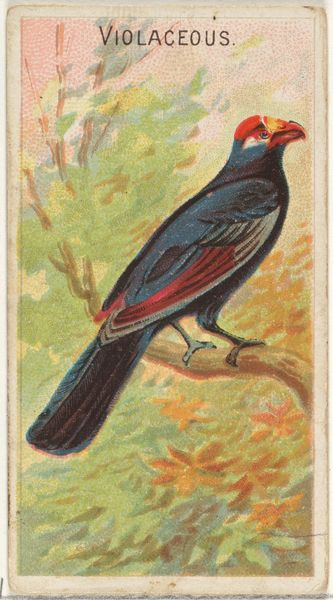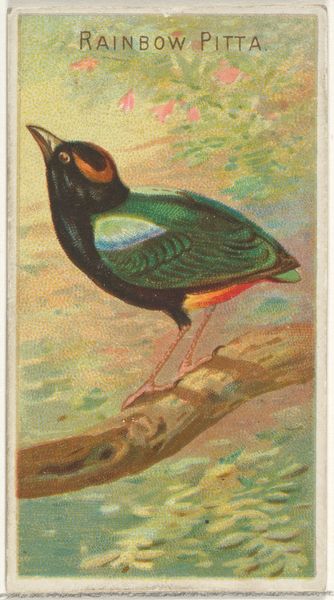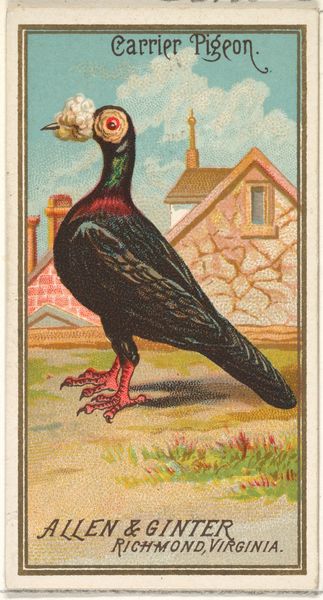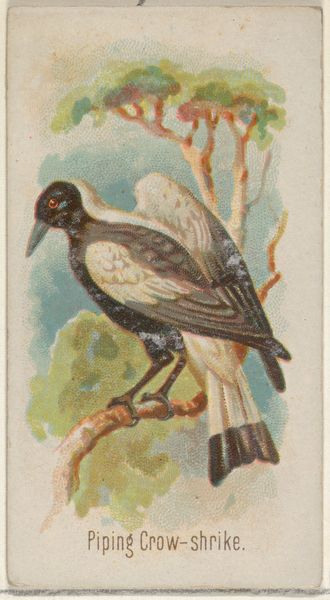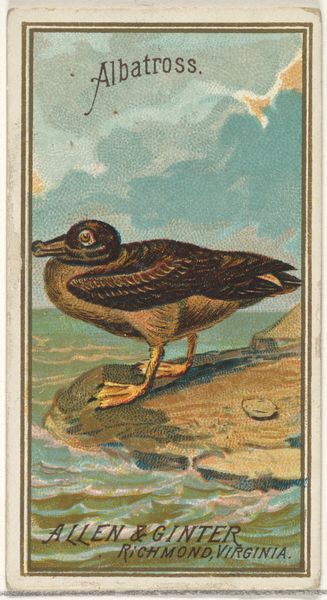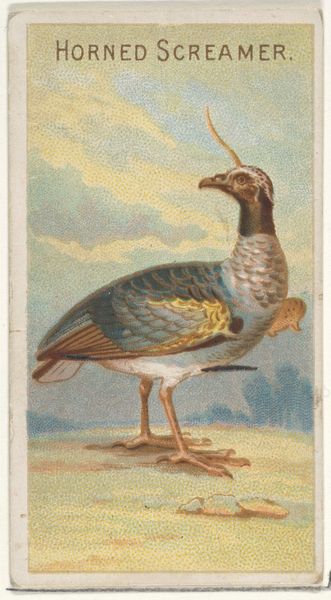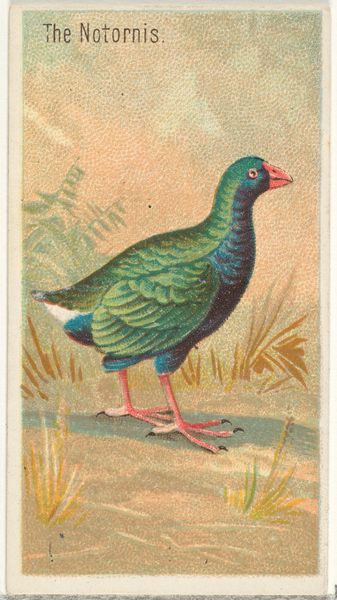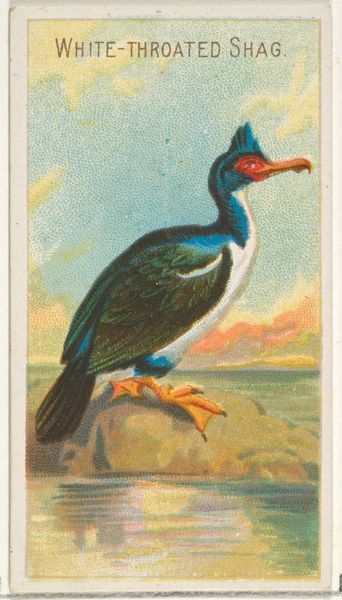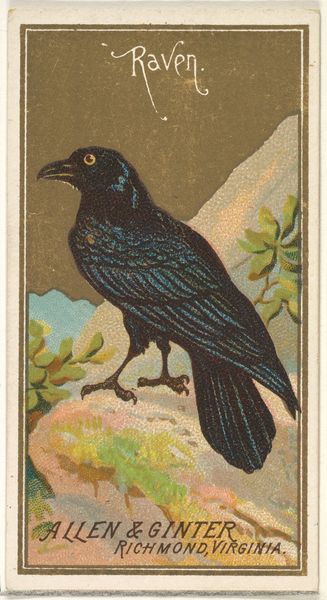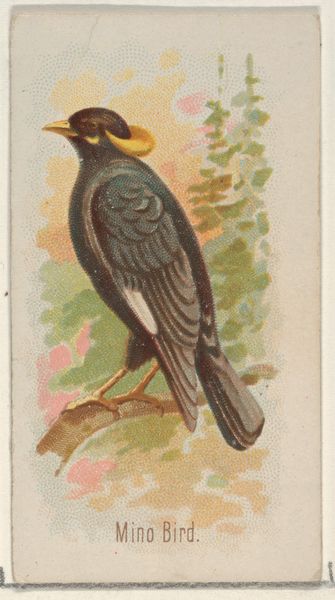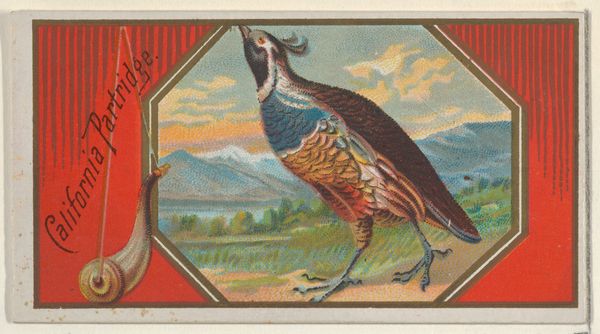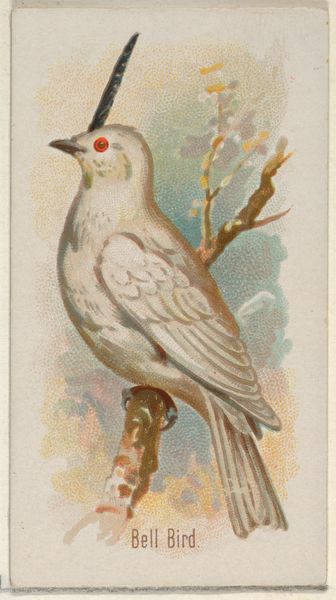
Tumbler Pigeon, from the Birds of America series (N4) for Allen & Ginter Cigarettes Brands 1888
0:00
0:00
Dimensions: Sheet: 2 3/4 x 1 1/2 in. (7 x 3.8 cm)
Copyright: Public Domain
Curator: Allen & Ginter produced this "Tumbler Pigeon" print as part of their Birds of America series back in 1888. What strikes you most about this particular image? Editor: It’s the bird's rather solemn gaze for me. Given the medium—I believe it's a watercolor drawing, isn’t it?—there’s a strange weight to its presence, considering that this brand was for commercial purposes, for cigarette cards, yes? Curator: Yes, this print appeared on a collectible card tucked into packs of Allen & Ginter cigarettes. These images weren’t simply about ornithological accuracy; they were very much about the socio-economic role of leisure and the intersectional politics embedded in collecting. Editor: The "tumbler" aspect—it relates to the breed's unique acrobatic flight, yes? A symbolism, perhaps, for the era's ambition and constant motion. Think about how this print participates in image culture, especially the circulation of symbols and ideals. The bird, positioned in this domestic backdrop, acts almost as a emblem, perhaps one of captivity masked in decorative form, rather than nature at work in motion? Curator: Absolutely. You have a firm understanding of context, which is crucial here. Consider how the print aesthetic borrows, seemingly simultaneously, from the visual tropes of both Ukiyo-e and Impressionism. It presents an accessible version of “exoticism,” fitting well with an era steeped in colonial exploits. The pigeon becomes not just a bird, but a marker of cultural capital, class, and power relations, condensed into this very small space. How the distribution networks relied on commodifying images within larger oppressive frameworks! Editor: I am thinking now of pigeons in culture broadly. Messengers and scavengers. Creatures of endurance but in these collectible cards for Allen and Ginter there are implications tied to trade and commerce as well. The bird in effect is no longer real in these moments, but becomes a manufactured object. What remains constant throughout all their cultural transmutations, in any case, is their enduring image within symbolic systems and networks of power relations across many cultural formations and aesthetic ones, too. Curator: Yes. So the seemingly simple image actually unfurls into complex ideas when viewed within their historic, economic, and social environment. Thanks for sharing your keen eye, particularly on such symbolic weight! Editor: My pleasure. It’s always rewarding to unearth layers of meaning beneath seemingly straightforward imagery.
Comments
No comments
Be the first to comment and join the conversation on the ultimate creative platform.
